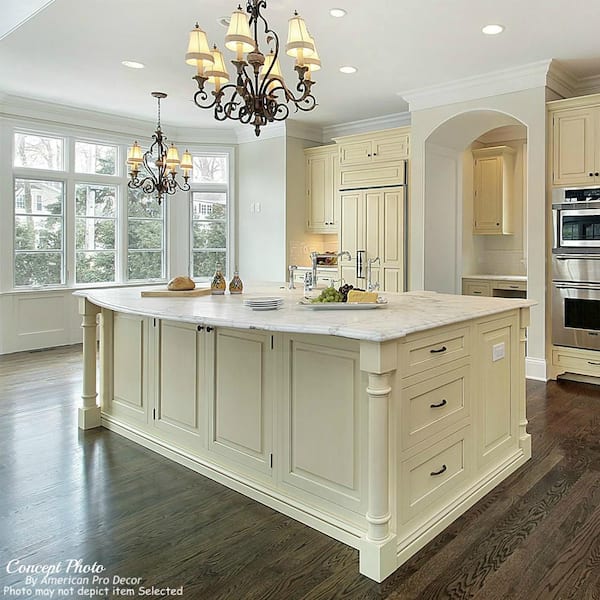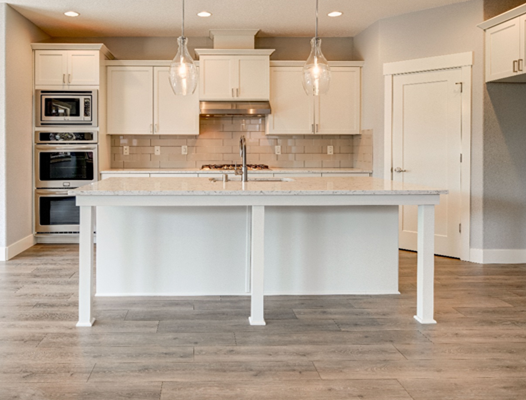Change Your Kitchen with Lovely Kitchen Island Legs
Change Your Kitchen with Lovely Kitchen Island Legs
Blog Article
Crucial Tips for Selecting the Perfect Table for Your Kitchen Area
Picking the ideal eating table for your kitchen area is more than just an issue of taste; it necessitates a detailed understanding of your space and needs. The shape of the table plays a critical function; while rectangular tables match larger areas, round ones foster affection, and extendable options provide flexibility. The table must integrate with your kitchen area's visual appeals and accommodate your family comfortably.
Measure Your Room
Selecting the perfect dining table starts with a precise evaluation of your offered area. This foundational action makes certain that the table not only fits comfortably within the space however also matches the overall design and functionality of your eating area.
It is vital to leave appropriate room for chairs to be pulled out and for people to move around the table without obstruction. A general guideline of thumb is to enable at least 36 inches of clearance from the side of the table to the nearby wall surface or item of furniture.
Additionally, think of the variety of individuals you usually amuse and whether you need additional space for visitors. Choosing an extendable table can provide flexibility, permitting you to suit varying varieties of restaurants. By properly determining your room, you prepared for picking a table that boosts both the aesthetic appeals and capability of your eating location.
Pick the Right Shape

On the other hand, round tables are superb for smaller sized cooking areas or intimate celebrations, as they advertise conversation by enabling everybody to deal with each other. They additionally give a sense of coziness and can fit well in tighter areas because of their absence of sharp edges. Oval tables offer the finest of both worlds, incorporating the length of rectangular tables with the affection of round ones, making them functional for different settings.
Square tables are another alternative, specifically suited for square-shaped spaces. They produce a contemporary and symmetrical appearance, fostering an equivalent dining experience for all seated.
Material Considerations
When choosing an eating table, product factors to consider are paramount in identifying the table's longevity, upkeep demands, and overall aesthetic. Timber is a classic choice, offering classic charm and toughness.
Glass-topped tables give a modern, sleek look and can make a space show up larger due to their openness. They need constant cleaning to stop smudges and fingerprints. In addition, toughened up glass is recommended for its additional toughness and safety and security.

Finally, composite products like MDF (Medium-Density Fiber board) or plywood are economical options. These products can simulate the appearance of solid timber yet might not provide the exact same longevity. They are normally easier to tidy however can be vulnerable to water damages otherwise effectively sealed.
Eventually, the selection of material should straighten with your click resources kitchen area's design, your lifestyle requires, and your budget constraints. (kitchen island legs)
Seats Ability and Comfort
Just how do you identify the right seats capability and convenience for your eating table? For a family members of four, a rectangle-shaped table of 48 inches long or a round table with a 48-inch size is usually adequate.
Comfort is dig this similarly vital. The height of the table should preferably be around 30 inches, offering a well balanced ergonomic position for seated restaurants. Chairs should have a seat elevation of 18 to 20 inches to make certain a comfy dining posture. Additionally, consider the chair style; upholstered seats and encouraging backrests can boost dining comfort considerably, specifically throughout extended meals.
Design and Appearance
Selecting a dining table that fits your design and appearance entails balancing individual taste with the existing style of your eating room. The table is typically the focal point of the kitchen, and its style ought to complement the general theme of the room. Whether your cooking area boasts a contemporary, minimalist look or a rustic, farmhouse charm, the table you select should harmonize with these aspects to develop a natural and inviting environment.
Take into consideration materials very carefully; wood offers a timeless appeal and can vary from abundant mahogany for a typical want to lighter oak for a modern feeling. Metal and glass tables, on the other hand, can introduce a smooth, industrial side to your cooking area. Don't neglect the table's form-- rectangle-shaped tables are functional and classic, while round and oblong options can foster an extra intimate eating experience.
In addition, pay attention to information and surfaces. A distressed surface may include personality and heat, whereas a glossy surface area can add to a clean, modern aesthetic. Ultimately, your eating check my site table ought to not only healthy seamlessly into your kitchen's design yet likewise reflect your individual style, boosting the room both functionally and aesthetically.
Verdict
In conclusion, selecting the optimal dining table for a kitchen demands careful evaluation of area, form, product, seating capability, and visual harmony. Making sure a minimal clearance of 36 inches assists in comfy movement, while the option of form enhances spatial characteristics. Product selection effects durability and design, making it critical to straighten with the cooking area's overall visual. Ultimately, an appropriate table cultivates a welcoming ambience and suits the home comfortably, hence improving the eating experience.

When choosing a dining table, product considerations are vital in establishing the table's toughness, maintenance requirements, and overall visual. For a family of four, a rectangle-shaped table of 48 inches long or a round table with a 48-inch size is normally adequate.
Do not ignore the table's shape-- rectangular tables are versatile and timeless, while round and oval options can cultivate an extra intimate dining experience. kitchen island legs.
Report this page